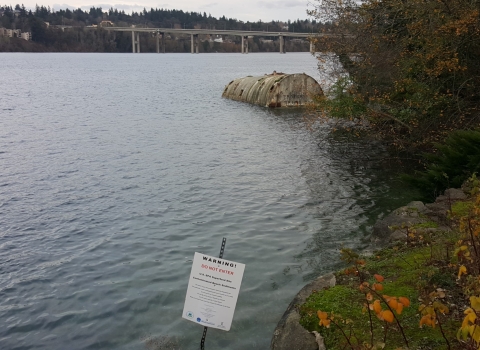Continuing the Biden-Harris administration’s efforts to increase recreational access on public lands, the U.S. Fish and Wildlife Service announced today 48 new distinct hunting opportunities on approximately 3,000 acres nationwide in the National Wildlife Refuge System.
Three national wildlife refuges, managed by the Service, are proposing to expand opportunities for hunting. These refuges are Cahaba River National Wildlife Refuge in Alabama, Everglades Headwaters National Wildlife Refuge in Florida and Minnesota Valley National Wildlife Refuge in Minnesota.
“Offering hunting and fishing on national wildlife refuges is a priority in the Service’s efforts to offer wildlife-related recreation for all Americans,” said Service Director Martha Williams. “Today, nearly 80 percent of Service stations offer hunting and fishing opportunities. Expanding access where it is compatible with each station’s wildlife conservation mission is foundational to the Service’s commitment to responsibly manage these areas for the benefit of future generations.”
Increasing access to public lands and waters is a central component of the administration’s approach to conservation, including locally led and voluntary efforts to conserve and protect U.S. lands and waters under the America the Beautiful initiative.
The proposed rule, appearing in the Federal Register,includes proposals to phase out lead ammunition and tackle at eight national wildlife refuges. The best available science, analyzed as part of this rulemaking, demonstrates that lead ammunition and tackle have negative impacts on both human health and wildlife, and those impacts are more acute for some species. The Service is engaged in a deliberate, open and transparent process of evaluating the future of lead use on Service lands and waters, working with our state partners and seeking input from other stakeholders and the public. In addition to the proposed phase-outs at eight national wildlife refuges, none of new proposed hunting and fishing opportunities announced today would increase the use of lead ammunition or tackle on refuges.
Everglades Headwaters National Wildlife Refuge is expanding existing hunting to newly acquired acres under a proposed non-lead ammunition requirement that would be effective immediately in fall 2023, as coordinated with the Florida Fish and Wildlife Conservation Commission. As previewed in the 2022-2023 final rule, Blackwater, Chincoteague, Eastern Neck, Erie, Great Thicket, Patuxent Research Refuge, Rachel Carson and Wallops Island National Wildlife Refuges are proposing to phase out lead ammunition and tackle by fall 2026. No other changes to lead ammunition or tackle are being proposed on any other national wildlife refuges in this rulemaking.
Hunting, fishing and other outdoor activities contributed more than $156 billion in economic activity in communities across the United States in 2016, according to the Service’s National Survey of Fishing, Hunting and Wildlife-Associated Recreation. More than 101 million Americans — 40 percent of the U.S. population age 16 and older — pursue wildlife-related recreation, including hunting and fishing.
The Service seeks comments from the public on the proposed rule for 60 days, beginning with publication in the Federal Register on June 23, 2023. The notice will be available at http://www.regulations.gov, Docket Number: FWS-HQ-NWRS-2023-0038 and will include complete details on the proposals on the national wildlife refuges and how to submit your comments.
The Service intends to finalize the proposed changes in time for the upcoming 2023-2024 hunting seasons.
The Refuge System is an unparalleled network of 568 national wildlife refuges and 38 wetland management districts. There is a national wildlife refuge national wildlife refuge
A national wildlife refuge is typically a contiguous area of land and water managed by the U.S. Fish and Wildlife Service for the conservation and, where appropriate, restoration of fish, wildlife and plant resources and their habitats for the benefit of present and future generations of Americans.
Learn more about national wildlife refuge within an hour’s drive of most major metropolitan areas. More than 55 million Americans visit refuges every year. National wildlife refuges provide vital habitat for thousands of species and access to world-class recreation, from fishing, hunting and boating to nature watching, photography and environmental education.
Under the National Wildlife Refuge System Improvement Act of 1997, the Service permits hunting and fishing along with four other types of wildlife-dependent recreation, including wildlife photography, environmental education, wildlife observation and interpretation, when they are compatible with an individual refuge’s purpose and mission. Hunting, within specified limits, is currently permitted on 398 wildlife refuges and 36 wetland management districts. Fishing is currently permitted on 343 wildlife refuges and 35 wetland management districts.
The Service manages hunting and fishing programs to ensure sustainable wildlife populations while also offering other wildlife-dependent recreation on public lands.



